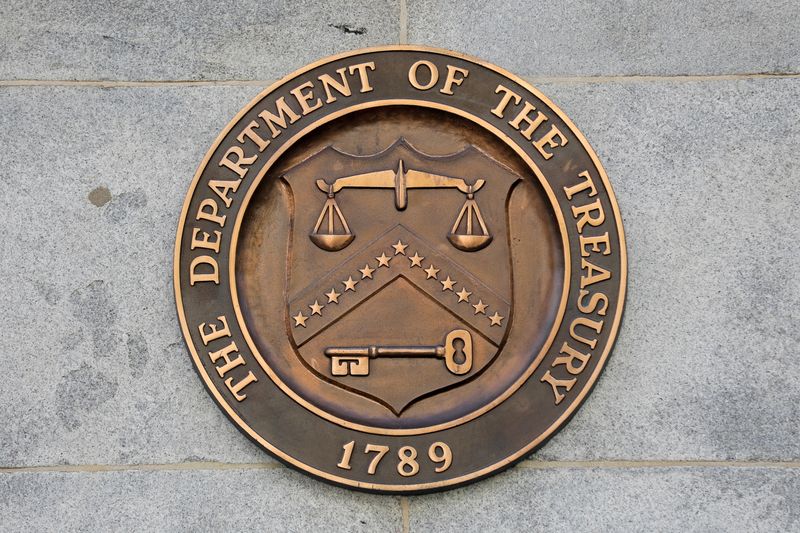(Bloomberg) -- The fate of the world’s biggest bond market is hanging largely on a single question: Has inflation in the US already peaked?
Treasury yields have swung back at forth since last month as traders try to game out whether the Federal Reserve will need to stick with an aggressive series of interest-rate hikes or have room to ease up if the economy slows enough to snap the steepest inflation in four decades.
The Friday release of the May consumer-price index report may help clarify the outlook, potentially holding the key to whether the benchmark 10-year Treasury yield stages another retreat or retests May’s high by pushing back over the psychologically key 3% level. It flirted with that Friday, when the yield rose as much as 8 basis points to 2.98% after the monthly jobs report underscored the economy’s continued strength.
With wages rising steeply amid a tight labor market, swaps contracts are pricing in certainty that the Fed will raise its target rate by a half-percentage point at its June and July meetings. But there’s still no strong consensus on whether policymakers will continue that pace at the September meeting or enact a quarter-point move, a step they may take if they’re worried about driving the economy into a recession or feel confident inflation is coming down.
“The jury is still out in terms of the inflationary trajectory,” said Jeffrey Rosenberg, senior portfolio manager for systematic multi-strategy at BlackRock Inc (NYSE:BLK)., said on Bloomberg Television. “You can’t really get the Fed out of the business of focusing on the number one priority -- of getting inflation down -- until you really start to see that definitively show up. Until that happens, it’s going to be a very tough time.”
That uncertainty ahead of the end-of-week release is adding to other forces promising to keep Treasuries volatile in the days ahead, including potential liquidity pressure. Also this week, the Treasury will hold its first auctions since the Fed has decided to stop reinvesting the proceeds of some of its maturing debt, another tool it’s using to tightening financial conditions.
Treasury yields rose across the board Friday after the Labor Department reported that US firms hired at a faster-than-expected pace in May. It also showed that average hourly earnings were up 5.2% from a year earlier, down slightly from 5.5% in April but still well above pre-pandemic levels. The May CPI figure is forecast to show an annual increase of 8.3%, matching April’s pace and down from as much as 8.5% in March.
But there are signs of faith in the Fed’s ability to rein it in. Its monetary policy tightening has started to drive down inflation expectations as higher yields ripple through the financial system. That mix has pushed real rates, or those adjusted for the anticipated rate of inflation, above zero this year from deeply negative territory, signaling less accommodative financial conditions.
“The jobs data was aligned to more of a soft-landing story,” said Alan Ruskin, chief international strategist at Deutsche Bank AG (NYSE:DB). However the risk is that inflation stays sticky and lags a slowing economy, he said, a “dilemma that policy officials wish to avoid but which appears likely.”
The 10-year breakeven rate, which uses the difference between nominal and inflation-protected Treasury yields as a gauge of expected inflation, has fallen to around 2.75% from 3.1% in early April.
Kathy Jones, chief fixed-income strategist at Charles Schwab (NYSE:SCHW) & Co., which manages over $7 trillion in total assets, says those expectations should remain in check as long as the Fed continues to follow through on its promise to tame consumer-price increases.
Fed speakers “are all almost repeating the same script -- that bringing inflation down is job one,” Jones said. “As long as they talk the talk and walk the walk, long-term inflation expectations will stay pretty well anchored.”
She expects half-point hikes in June and July before the Fed starts reducing the size of its increases, though she says a broadly strong CPI report would likely reinforce speculation of a 50-basis-point move in September.
Separately, the week’s upcoming auctions will be the first affected by the Fed’s balance-sheet reduction plan. Instead of reinvesting its $15 billion of Treasury debt maturing on June 15 into those auctions, which settle the same day, the bank will reinvest only about $5.6 billion.
The Fed’s reinvestment purchases are done with so-called auction add-ons, which reduce the amount the Treasury has to borrow from the public. While for now that lost Fed support won’t require the Treasury to sell more debt since out-sized tax revenue has reduced the deficit, strategist anticipate that the Fed’s reduced hand in the marketplace will hurt liquidity and boost volatility.
Meanwhile, a potential corporate-debt sale from Oracle Corp (NYSE:ORCL). connected to a $28 billion acquisition could spur volatile hedging-related activity.
“You have a market that might not be able to withstand some of the run-off that we are going to have,” said Ira Jersey, chief US interest-rate strategist at Bloomberg Intelligence, referring to the Fed’s balance sheet reduction. “So you are going to see significantly higher volatility in rates markets.”
What to Watch
- Economic calendar:
- June 7: Trade balance; consumer credit
- June 8: MBA mortgage applications; wholesale trade
- June 9: Jobless claims; Bloomberg June US Economic Survey; household net worth
- June 10: Consumer prices; real average hourly earnings; University of Michigan sentiment/current conditions/expectations; monthly budget statement
- Fed calendar is empty due to the standard pre-FOMC meeting quiet period
- Auction calendar:
- June 6: 13- and 26-week bills
- June 7: 3-year notes
- June 8: 10-year notes reopening
- June 9: 4- and 8-week bills, 30-year bonds reopening
©2022 Bloomberg L.P.
